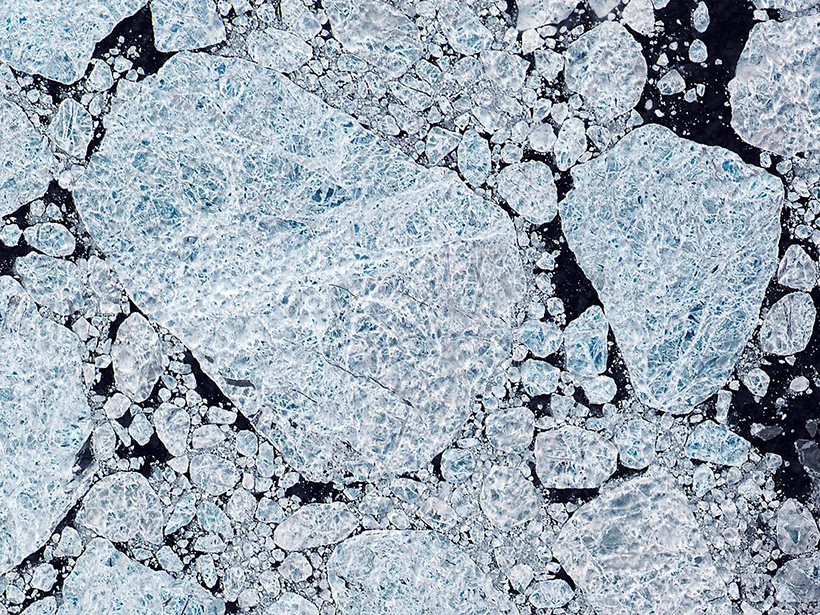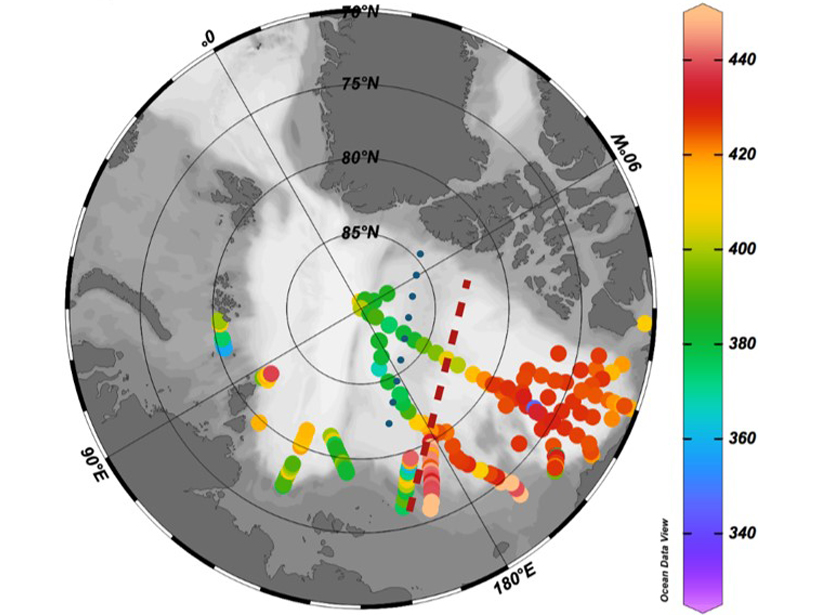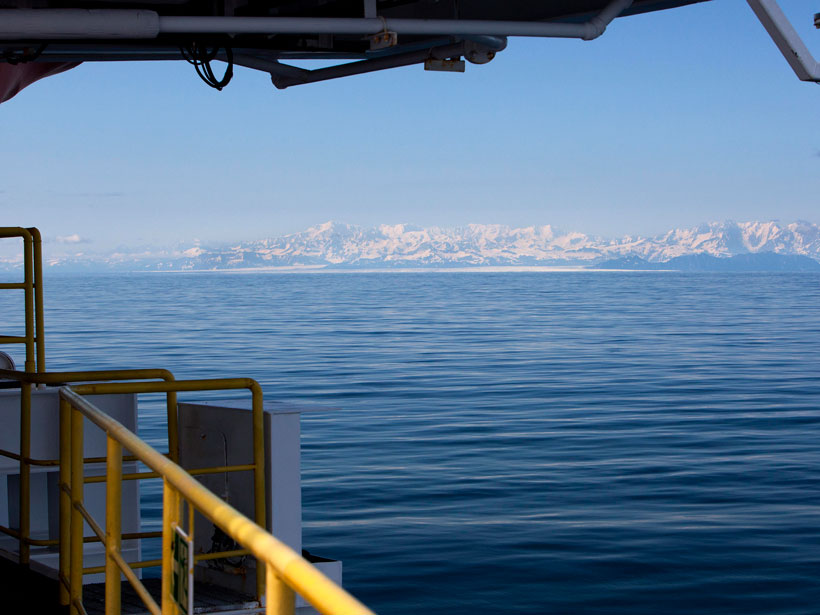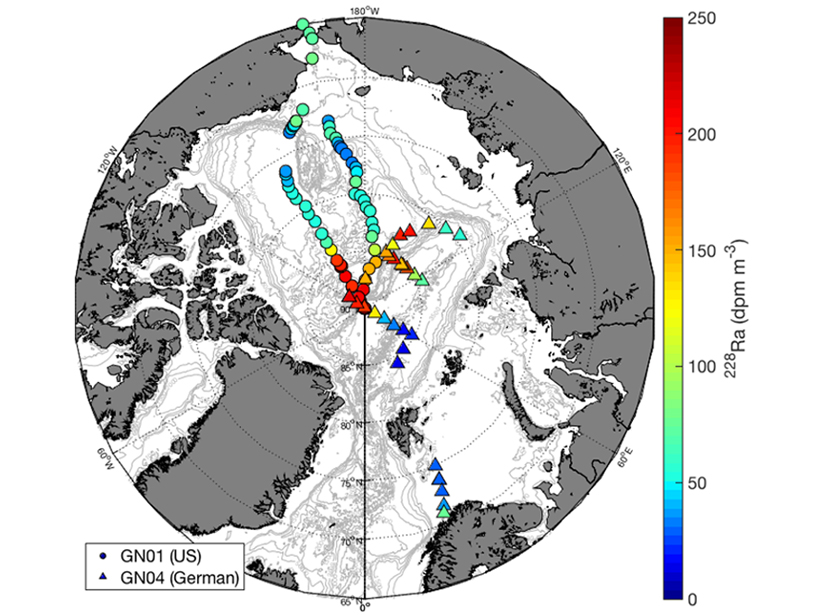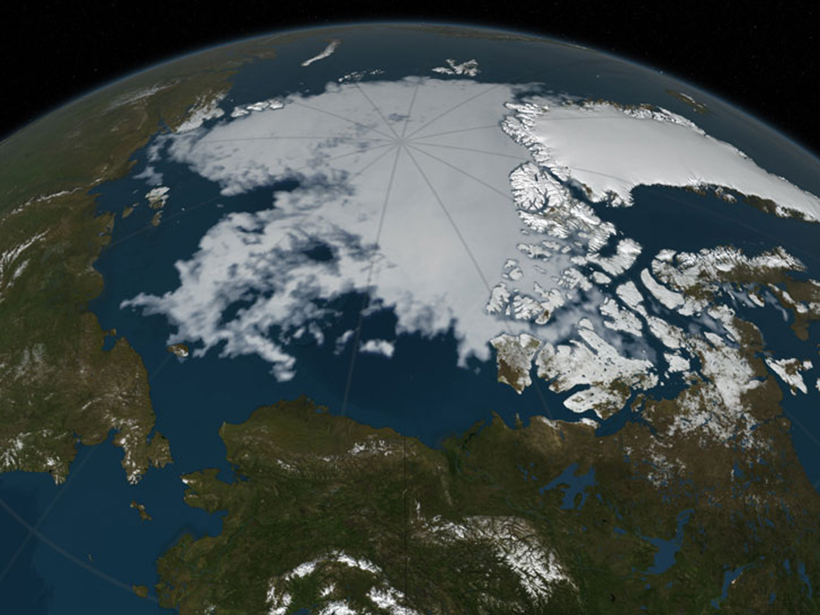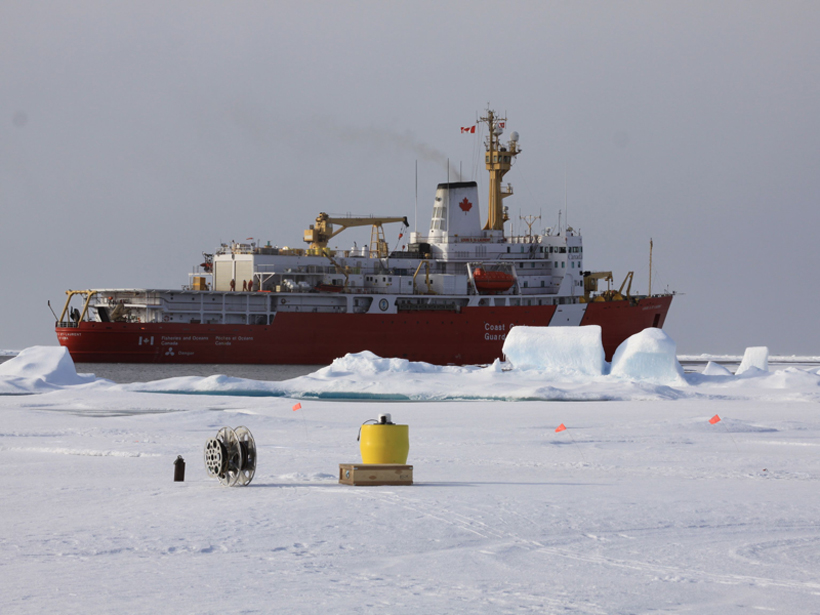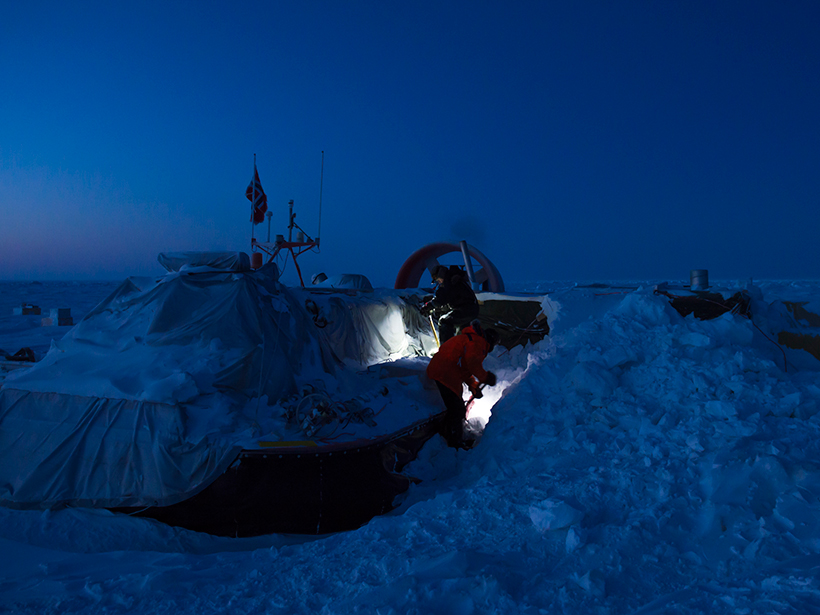A warming event in Siberia caused winds to strip sea ice from the Arctic’s Wandel Sea.
Arctic Ocean
Distinguishing Pacific and Atlantic Contributions to the Arctic
A semi-conservative tracer combining nitrate and dissolved oxygen is more accurate than traditional tracers in distinguishing between Atlantic and Pacific water mass contributions to the Arctic.
The Ice Nurseries of the Arctic Are Melting
Ice formed in coastal nurseries along Russia’s Arctic coast is melting before it can float far offshore. Scientists are worried about what that means for wildlife.
The Future of Scientific Drilling in the North Pacific and Arctic
International Ocean Discovery Program Workshop; Mount Hood, Oregon, 25–27 September 2018
Increased Release Rates of Radium Isotopes on Arctic Shelves
A longer ice-free season on Arctic shelves causes an increase in sediment-water interaction.
Exploring a More Dynamic Arctic Icescape
A joint special issue presents new findings from a field campaign in the Arctic Ocean which highlights key processes that need to be taken into account to predict the future of the Arctic ice pack.
A Benchmark for Trace Greenhouse Gases in the Arctic Ocean
Samples of seawater from the North American Arctic show that the region is neither a major source nor sink of methane and nitrous oxide to the overlying atmosphere.
How Arctic Ice Affects Gas Exchange Between Air and Sea
Scientists begin to fill a major data gap by investigating carbon dioxide dynamics in a remote region of the Arctic Ocean.
Scientists Spend Arctic Winter Adrift on Sea Ice
A hovercraft-based ice drift station gives researchers access to previously inaccessible regions of the changing Arctic sea ice cover off the coast of Greenland.
What Does the Pacific Arctic's New Normal Mean for Marine Life?
Climate change has reconfigured Arctic ecosystems. A 5-year project focuses on the relationships among oceanographic conditions and the animals and other life-forms in this region.

